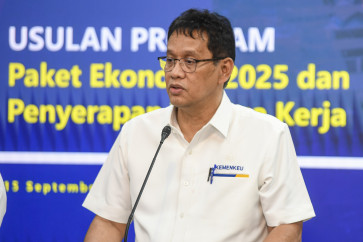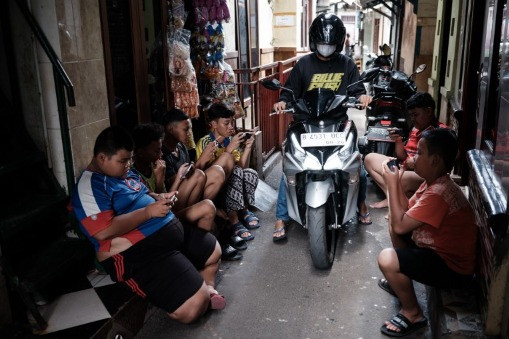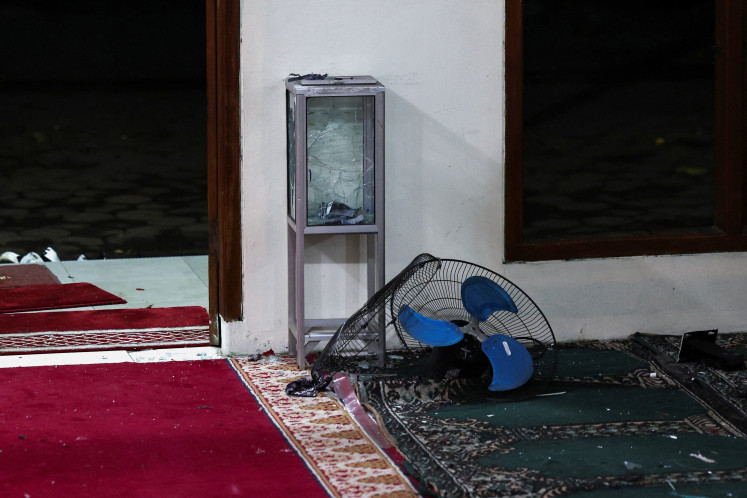Popular Reads
Top Results
Can't find what you're looking for?
View all search resultsPopular Reads
Top Results
Can't find what you're looking for?
View all search resultsToward food self-sufficiency in Karanganyar
An abundance of cheap cassava and the high consumption of flour in Karanganyar inspired a group of farmers there to seek a new source of income
Change text size
Gift Premium Articles
to Anyone
A
n abundance of cheap cassava and the high consumption of flour in Karanganyar inspired a group of farmers there to seek a new source of income.
Over the past eight months, modified cassava flour (mocaf) has become a big trend in the area, especially among the Union of Farmers Aspiring for Prosperity (HTNM). This group, with guidance from the Agricultural Technology Development Institute (LPTP), has succeeded in passing the final round of the AGF-BC Community Entrepreneurs Challenge 2011 sponsored by the British Council.
The HTNM, which comprises more than 50 farmer unions in Karanganyar, was formed in 2001 and has become an information exchange hub for hundreds of farmers, most of whom grow cassava. Since the LPTP organized a mocaf production demonstration at the end of last year, many union members have attempted the technique, particularly in the four main cassava producing subdistricts: Jumantono, Jatiyoso, Jumapolo and Jatipuro.
“I started making small amounts of mocaf in July and have seen a slight increase in family income,” says union member Hadi Purwanto, who does not own the land he farms.
“I can sell newly harvested cassava or dried cassava for between Rp 300 [3 US cents] and Rp 600 per kilogram, depending on market conditions. But if I process the cassava into mocaf, my profits double. Now I can earn a gross income of Rp 20,000,” he adds.
Agricultural laborers such as Hadi must continually seek alternative sources of income so that their income is not solely dependent on farming, which is not always a reliable source of money.
Mocaf has its own unique attributes that set it apart from other types of flour. Since it does not contain gluten, mocaf is safe for people who suffer from autism. Wheat flour can also be very expensive despite the fact that it is in high demand. From January to September 2010, flour consumption in Indonesia increased 8.8 percent from 2.37 million tons to 2.93 million tons. Not surprisingly, wheat imports to Indonesia are expected to increase 100 percent over the next 10 years.
According to the Indonesian Flour Producers Association, Indonesia’s dependence on wheat flour is unstoppable. For this reason, a flour substitute whose basic ingredient is readily available locally has promising prospects.
The HTNM, whose members are highly motivated and are well connected, gather every 35 days to share the latest information and to discuss solutions to problems they face. “Besides discussions at these routine meetings, we have promoted mocaf by providing free samples to hawkers, holding group meetings outside the HTMN, and through women in the Family Welfare Movement [PKK],” HTMN district chief Wagiyo says.
“We have also promoted [mocaf] at Soropadan auction market and at the Solo Raya Small-Medium Industry exhibition last August,” he adds. This effort was successful in attracting public interest and has led to an increasing number of people attempting to produce mocaf, both individually and in small groups.
Djoko Purwahono from the Karanganyar Industry and Trade Agency says he is optimistic about the future of mocaf because it can provide people with an alternative source of income, increasing farmers’ earnings, educating them to be creative with their own products and freeing them from dependency.
“Confidence in their own products will grow and [they will] no longer be so vulnerable to fluctuations in the market system,” Djoko says. “But the path that needs to be taken is still a long way off and [farmers] must start thinking about what goods can be created from mocaf so that sales and its competitive advantage increase.”
“We dream that mocaf flour will one day replace wheat flour in all households here. This is more about fulfilling local needs. If that happens, Karanganyar will have become self-sufficient in food and will no longer rely on imported wheat flour. Its people will also be able to reduce their shopping budget,” says Eko Istiyanto from the LPTP.
Eko has been assisting the Karanganyar farmers union since 1999. Managerial and financial assistance has become one of the main agendas of the LPTP in the hope that one day the farmers in the union can be independent and run their own mocaf industry.










